What is Exclusion Trapping?
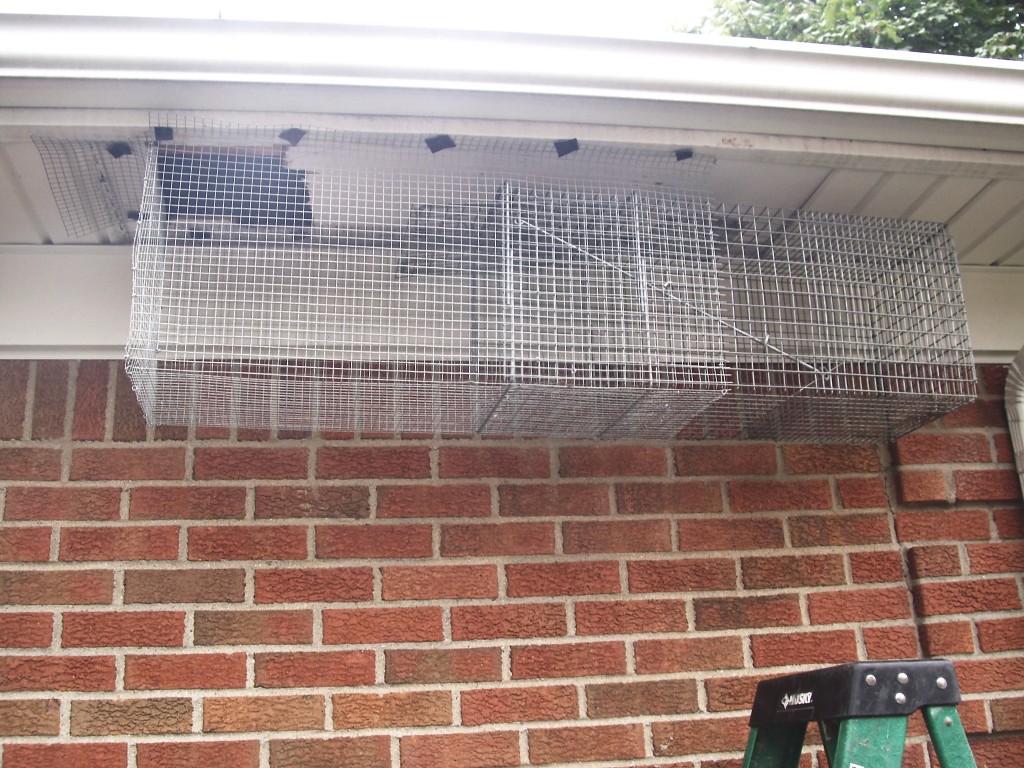
What is exclusion trapping? Exclusion trapping is a type of live trapping where an animal is trapped at its point of entry into a structure. It is opposed to ground trapping, where a baited trap is simply placed on the open ground in hopes that the target animal will go into it.
Exclusion trapping has several benefits: As the trap is set up so the target animal has to go through it, it does not require the use of bait that has to be replenished. In situations where there may be more than one animal in the vicinity (squirrels, for example), it also ensures that we are trapping the target animal and no other. It is ideal for situations where the animal is actually living in your roof or chimney. As we will see, it is also tremendously versatile.
Examples of Exclusion Trapping
Let’s take a look at some examples of exclusion trap set ups used by Northern Pest
technicians. Here we see a raccoon has made an entry point into a roof via the chimney chase:
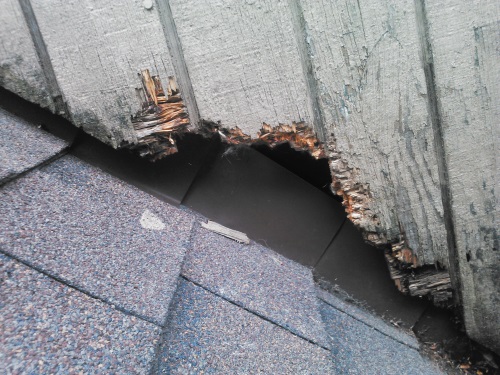
In order to catch this raccoon, a trap needs to be set up at this entry point, since this is the means by which we know the raccoon uses to go in and out of the home. The problem is that a trap cannot fit snugly over this opening, so the technician must modify this entry point in such a way that a trap can be placed over it. In the next picture, we see that the technician has covered the original entry point with flashing and created another. This square entry point is perfectly customized for one of our exclusion traps to go over it.
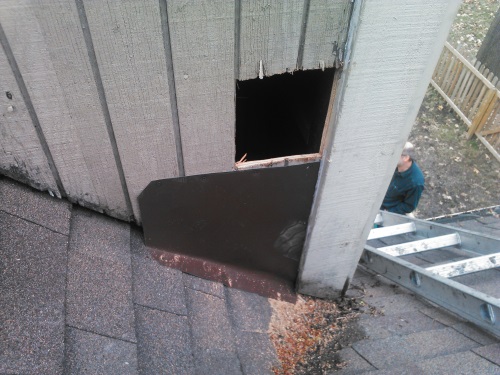
Here we see the technician has installed a trap directly to the structure. The trap fits nicely over the opening the technician has created in the chimney chase. At night, when the raccoon decides to go out, it will have to come through this passage and will wind up in the trap.
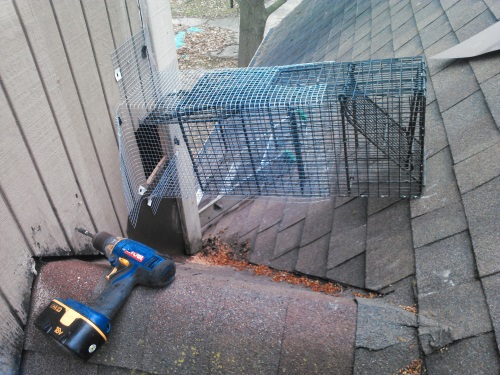
Here is another example of an exclusion trap attached to a gable vent. Here we see the technician has had to construct a wooden support to position the trap correctly. This trap is covered because a covered trap helps keep the animal calm while it is in the trap by restricting its field of vision:
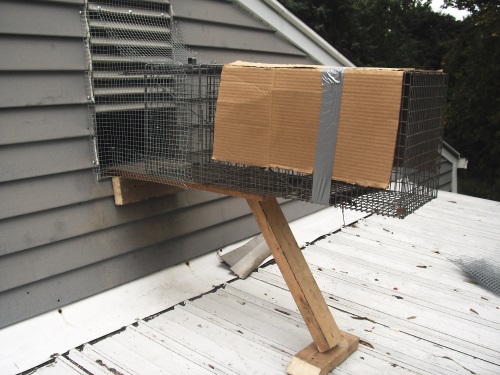
With enough ingenuity, exclusion traps can be affixed to any opening. In the next picture, we see an exclusion trap has been affixed to a chimney. Again, a wooden frame has been constructed to position the trap properly.
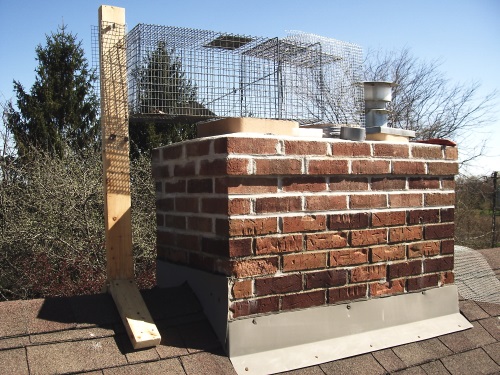
In this picture we see the versatility of exclusion traps. This trap has been vertically attached and, as we can see, a coon is caught in the trap and is awaiting pickup.
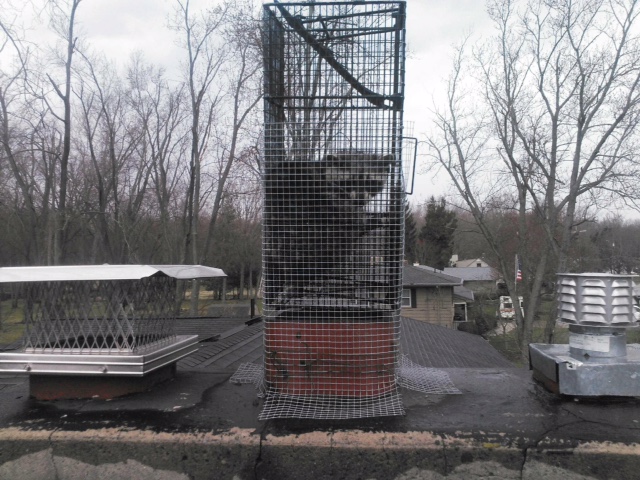
Exclusion traps are also very handy when dealing with squirrels. Squirrels cannot be easily ground trapped because there is no way to ensure that the squirrel you catch on the ground is the same squirrel that is getting in and out of your roof. For this reason, exclusion trapping of squirrels is the best way to handle them because by placing the trap at the point of entry you ensure you are getting the same creature that’s getting into the home. Here we see an example a smaller exclusion trap, such that would be ideal for snagging squirrels:
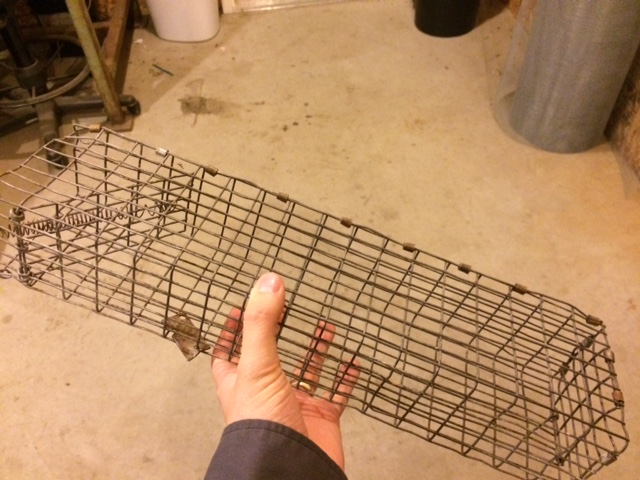
Because of their small size, these squirrel excluders are even more versatile than the larger coon excluders and can go in any variety of places and positions:
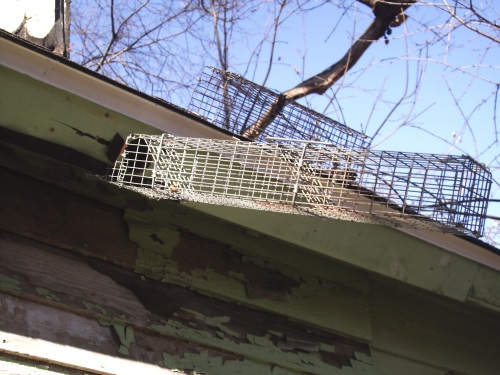
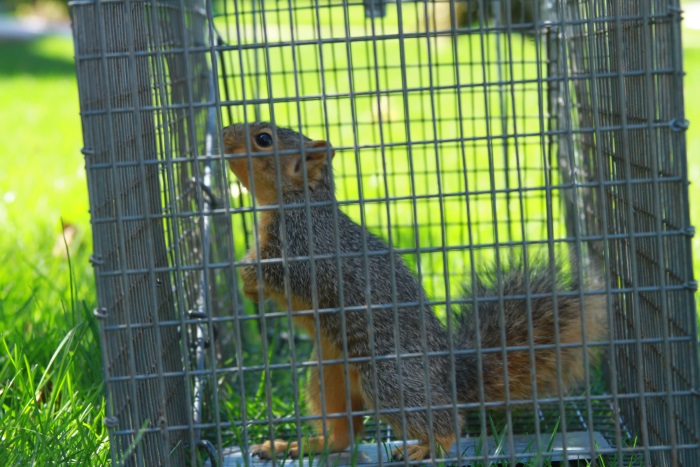
As you can see, there is no one standard method for exclusion trapping. It is pretty much customized for every job. But then again, no two trapping jobs are alike!